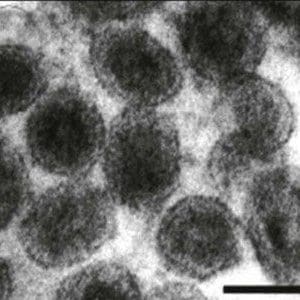
Get A Testing Quote
Porcine Reproductive and Respiratory Syndrome Virus
Porcine Reproductive and respiratory syndrome virus, North American strain, USDA 2PDV1801 (PRRSV-2)
Structure: Enveloped RNA Virus
Genome: Single-stranded positive sense RNA Virus
Family: Arterivirdae
Primary Host: Pigs of all ages
Disease caused: Pneumonia, hypoxia
Potential complications: High Fever, abortions, early farrowing, fetal death
Transmission Mode: close contact or by exposure to contaminated body fluids
Sites of Community Outbreaks: Prevalent in the United States and Endemic in Austria
Importance of Virus:
Porcine Reproductive and respiratory syndrome virus (PRRSV) is a single-stranded positive-sense RNA virus belonging to the Arterivirdae family. It first appeared in swine herds in Europe, North America, and Asia in the late 1980s and early 1990s and was deemed uncontrollable.
Infection is typically limited to the upper respiratory system, where primary replication occurs in lymphoid tissues. PRRSV is known to cross the placenta during late gestation and can potentially kill the fetus or fetuses.
Importance of Disinfection:
PRRSV is one of the most economically important viruses since it has been affecting the global swine industry. In the past 15 years, many production systems in the swine industry have been tailored to control or eliminate this virus. There is significant antigenic and genetic variability amongst the strains of PRRSV, which makes this virus difficult to control.
PRRSV is moderately resistant to environmental degradation and inactivated by phenol, formaldehyde, and other common disinfectants. The difference in virulence amongst the different strains of PRSSV is not yet known, but it is known that the virus mainly targets cells of the immune systems, which include Pulmonary Intravascular Macrophages (PIM) and pulmonary alveolar macrophages (PAM). It is also known that the virus often interacts with other microorganisms such as Mycoplasma hyopneumoniae to magnify the severity of diseases.
References
https://porcinehealthmanagement.biomedcentral.com/track/pdf/10.1186/s40813-016-0044-z.pdf
https://www.ncbi.nlm.nih.gov/pmc/articles/PMC136148/
https://vetmed.iastate.edu/vdpam/FSVD/swine/index-diseases/porcine-reproductive
Share

